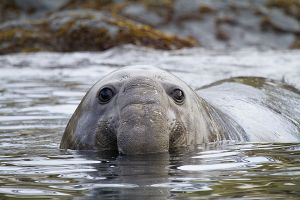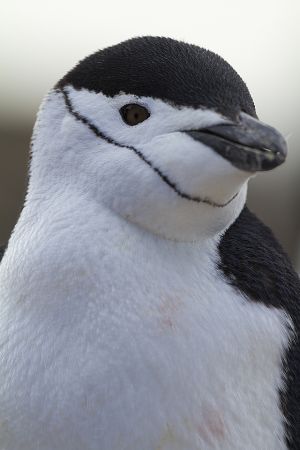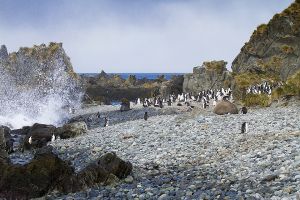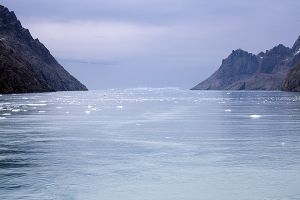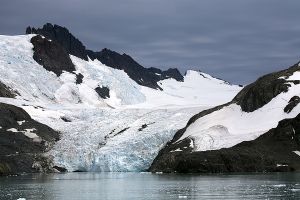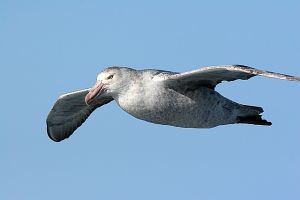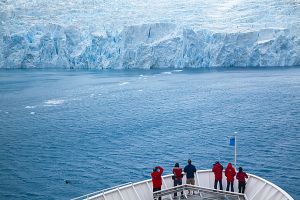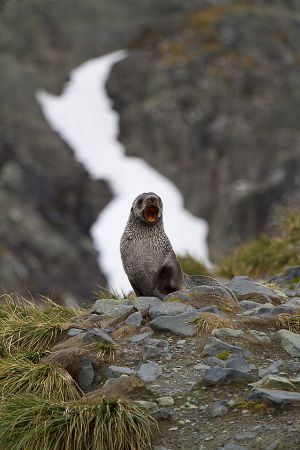Overnight the National Geographic Explorer has steamed down the south-west coast of South Georgia, arriving at Cooper Bay in the south-east corner of the island early this morning. Conditions are perfect, no wind and 4 degrees Celsius with clear overhead conditions and calm seas as a result. There is a morning hike to the macaroni penguin colony or a zodiac cruise along the coast line with a landing further afield at a chinstrap penguin colony. The shallow coastal waters are littered with male elephant seals strategising their forays into the harems of the dominant males. Several bull Antarctic fur seals have arrived early to establish their territority, and the air is full of snorting fur seals, bellowing elephant seals and the squeaks of their new born pups. Birdlife is also plentiful, with skuas, giant petrels, Antarctic petrels, Antarctic sheathbills, kelp gulls and blue eyed shags all busily feeding.
There is a large chinstrap colony at Cooper Bay, of several thousand breeding pairs. It is early in the season with chinstraps still selecting their spot and gathering stones for their nests. The colony appears to have recovered from a bout of avian cholera in 2004, this being the first time the colony has been accessible since, and reinforces the rationale behind the need to disinfect boots before and after each landing to prevent the spread of disease and bacteria between colonies.
This afternoon we steam towards Drygalski Fjord, with hopes of kayaking in Larsen Harbour. The weather is completely different in the fjord, with katabatic winds gusting down from the glacier putting paid to that idea. Larsen Harbour is judged safe enough for a zodiac cruise so we visit several Weddell seals who have made a sheltered rocky beach in the harbour their resting place, along with some early arrival young Antarctic fur seals.

